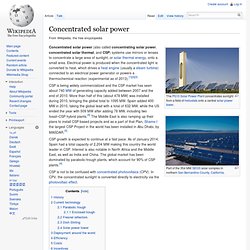

A Test Of Nevada's Solar Tower Project Torched Over A Hundred Birds New Process Uses Sunlight to Split Water. This Research in Action article was provided to LiveScience in partnership with the National Science Foundation.

A University of Colorado Boulder research team has moved closer to what some call the Holy Grail of a sustainable hydrogen economy — splitting water with sunlight. The CU-Boulder team has devised a solar-thermal system designed to use a vast array of ground mirrors to concentrate sunlight onto a single point atop a central tower up to several hundred feet tall. The tower would gather heat to roughly 2,500 degrees Fahrenheit (1,350 Celsius) and then deliver it into a reactor containing chemical compounds known as metal oxides. As the metal oxide compound heats up, it releases oxygen atoms, changing its material composition and causing the newly formed compound to seek out new oxygen atoms. The team showed that adding steam to the system would cause oxygen from the water molecules to adhere to the metal oxide surface, freeing up hydrogen molecules for collection as hydrogen gas.
Behold the incredible, gorgeous future of energy production. Concentrated solar power. Concentrated solar power (also called concentrating solar power, concentrated solar thermal, and CSP) systems use mirrors or lenses to concentrate a large area of sunlight, or solar thermal energy, onto a small area.

Electrical power is produced when the concentrated light is converted to heat, which drives a heat engine (usually a steam turbine) connected to an electrical power generator or powers a thermochemical reaction (experimental as of 2013).[1][2][3] CSP is being widely commercialized and the CSP market has seen about 740 MW of generating capacity added between 2007 and the end of 2010. More than half of this (about 478 MW) was installed during 2010, bringing the global total to 1095 MW. CSP growth is expected to continue at a fast pace. As of January 2014, Spain had a total capacity of 2,204 MW making this country the world leader in CSP. CSP is not to be confused with concentrated photovoltaics (CPV). History[edit] Current technology[edit] Parabolic trough[edit] Source:[25][26] Concentrating Solar Power in Egypt. The four-year project test project, known as "Multi-Purpose Applications by Thermodynamic Solar", or MATS, has received 22 million Euros (US$28 million) from the European Union under its Seventh Framework Programme (FP7), and will also involve European universities and companies.

This will be used to build and test MATS units at a site in Burj Al Arab, a desert area near Alexandria. The units can be powered using both solar energy, and renewable energy sources such as biomass and biogas. The test facility will aim to generate one megawatt of electrical power and 250 cubic metres of desalinated water per day. In a statement, Maged Al-Sherbiny, the ASRT’s president, said that MATS units could be used to exploit "concentrated solar energy through small and middle scale facilities, to fulfill local requirements of power, heat, and desalinated water". Khaled M. Www.scidev.net/
Foundation: Start. DESERTEC awarded the Spanish power plant Gemasolar of the operating company Torresol with the DESERTEC Award 2014.

With a total storage capacity of 15 hours Gemasolar can produce electricity at night, as well as in cloudy weather conditions. It complements other alternative energy sources, such as wind and photovoltaic, because it can compensate fluctuations in their energy supply. Consequently, these variable sources can reach their fullest potential without the use of fossil fuels. Today, we lay the groundwork for our future energy supply.
Each coal- or nuclear power plant built hinders the global energy transition. More information about the DESERTEC Award 2014. Super-efficient solar-energy technology: ‘Solar steam’ so effective it can make steam from icy cold water. Rice University scientists have unveiled a revolutionary new technology that uses nanoparticles to convert solar energy directly into steam.

The new "solar steam" method from Rice's Laboratory for Nanophotonics is so effective it can even produce steam from icy cold water. The technology's inventors said they expect it will first be used in sanitation and water-purification applications in the developing world. Rawlemon’s Spherical Solar Energy-Generating Globes Can Even Harvest Energy from Moonlight. The solar energy designers at Rawlemon have created a spherical, sun-tracking glass globe that is able to concentrate sunlight (and moonlight) up to 10,000 times.

The company claims that its ß.torics system is 35% more efficient than traditional dual-axis photovoltaic designs, and the fully rotational, weatherproof sphere is even capable of harvesting electricity from moonlight. The ß.torics system was invented by Barcelona-based German Architect André Broessel. He sought to create a solar system that could be embedded in the walls of buildings so that they may act as both windows and energy generators. This marble is a sun-tracking, solar energy-generating globe, meant to concentrate sunlight by 1000x. Designed by a University of Arizona engineering team led by Roger Angel, it is much more efficient than traditional designs : Futurology.